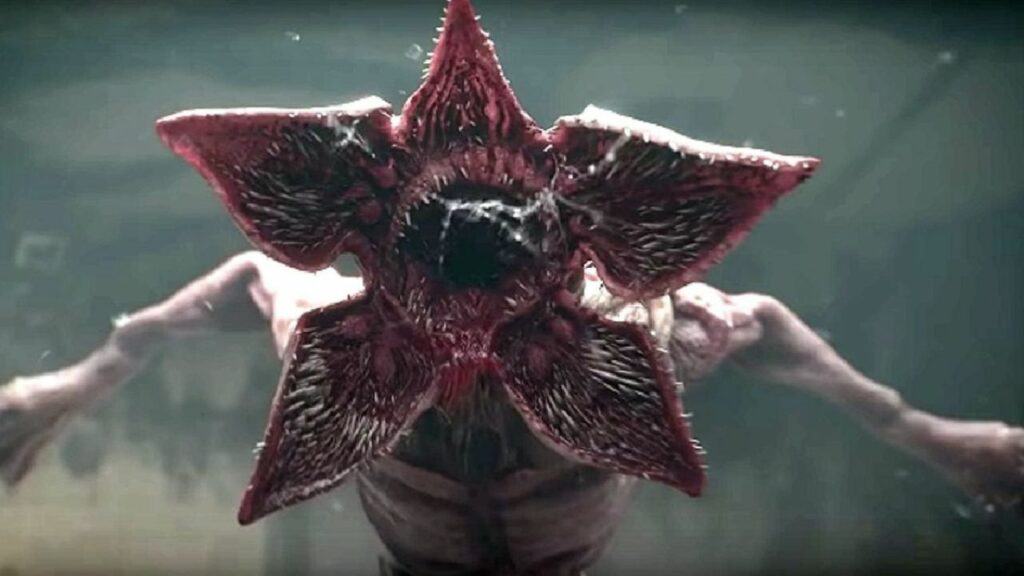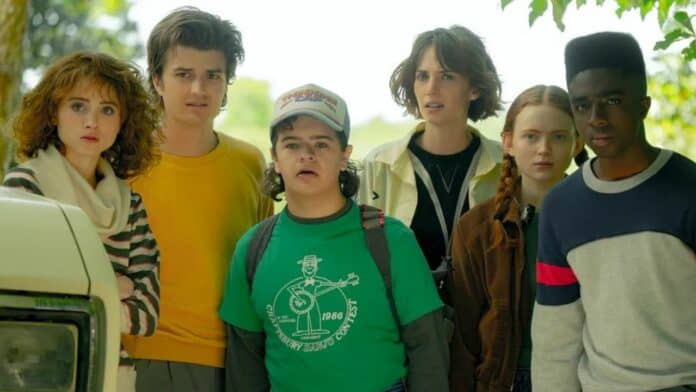Stranger Things follows a group of young friends who encounter mysterious forces and secret government experiments when they search for their missing friend, uncovering a sinister parallel dimension known as the Upside Down.
In the realm of modern television, few shows have captured the imagination of audiences like Stranger Things.
This hit Netflix series, a blend of 1980s nostalgia, supernatural thrills, and character-driven drama, has become a cultural phenomenon.
A significant element of its appeal lies in its intricate use of symbolism, which deepens the narrative and enriches the viewing experience. From the very beginning, Stranger Things establishes itself as a show steeped in symbolism.
The series opens in the small town of Hawkins, Indiana – a setting that itself is symbolic. Hawkins represents the quintessential American small town, a microcosm of the country during the 1980s.
It’s a place where normalcy is revered, yet beneath its serene surface lies a world of secrets and mysteries.
This dichotomy between the ordinary and the extraordinary forms the backdrop against which the show’s symbolic elements play out.
The Upside Down: A Mirror of Conflict
One of the most powerful symbols in Stranger Things is the Upside Down.
This dark, parallel dimension is not just a plot device but a symbol of the characters’ internal struggles and fears.
The Upside Down is a mirror image of the real world, twisted and corrupted, reflecting the hidden anxieties and turmoil of the characters.
It’s a place where the rules of reality are subverted, mirroring the upheaval in the lives of the protagonists, especially the children.
The Upside Down can also be seen as a metaphor for adolescence itself – a tumultuous period where the world seems alien and menacing.
Eleven: A Symbol of Identity and Isolation
The character of Eleven, with her psychic abilities, is another focal point of symbolism.
Her journey from a lab experiment to a person with her own identity symbolizes the struggle for self-discovery and the fight against dehumanization.
Eleven’s powers, while making her formidable, also isolate her, symbolizing the alienation often felt during adolescence.
Her character arc, as she grapples with her own identity and morality, resonates deeply with the show’s themes of personal growth and resilience.
The Demogorgon and 1980s Pop Culture
Furthermore, the Demogorgon, the monstrous entity from the Upside Down, symbolizes the unknown and the fear of the other.
Its appearance is a stark contrast to the familiar, safe world of Hawkins, representing the invasion of the unknown into the characters’ everyday lives.

The Demogorgon’s defeat, therefore, symbolizes the triumph over fear and the unknown. The use of 1980s pop culture in Stranger Things also serves as a symbolic element.
The show is laden with references to 1980s movies, music, and video games, which are not just nostalgic callbacks but also serve to frame the story in the context of the era’s cultural and societal norms.
These references often parallel or foreshadow events in the show, creating a multi-layered narrative that rewards attentive viewers.
Color Symbolism: A Visual Narrative
Finally, Stranger Things uses color symbolism extensively.
The contrast between the warm, vibrant colors of Hawkins and the cold, dark hues of the Upside Down creates a visual representation of the clash between good and evil, the known and the unknown.
This color symbolism extends to the characters and their environments, subtly influencing the viewer’s perception and understanding of the story.
Conclusion
In conclusion, the use of symbolism in Stranger Things is not just a storytelling technique but a vital component of its narrative fabric.
Through its symbolic elements, the show conveys deeper meanings, enriches character development, and creates an immersive world that resonates with viewers.
As Stranger Things continues to captivate audiences, its symbolic depth ensures its place not just as a piece of entertainment, but as a work of art that speaks to the human experience.

